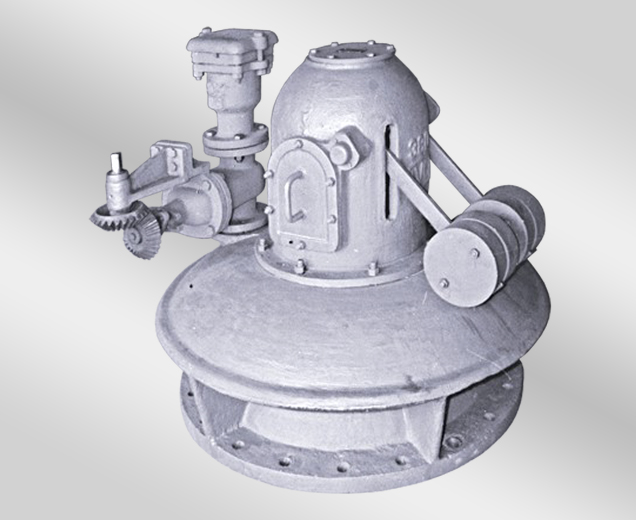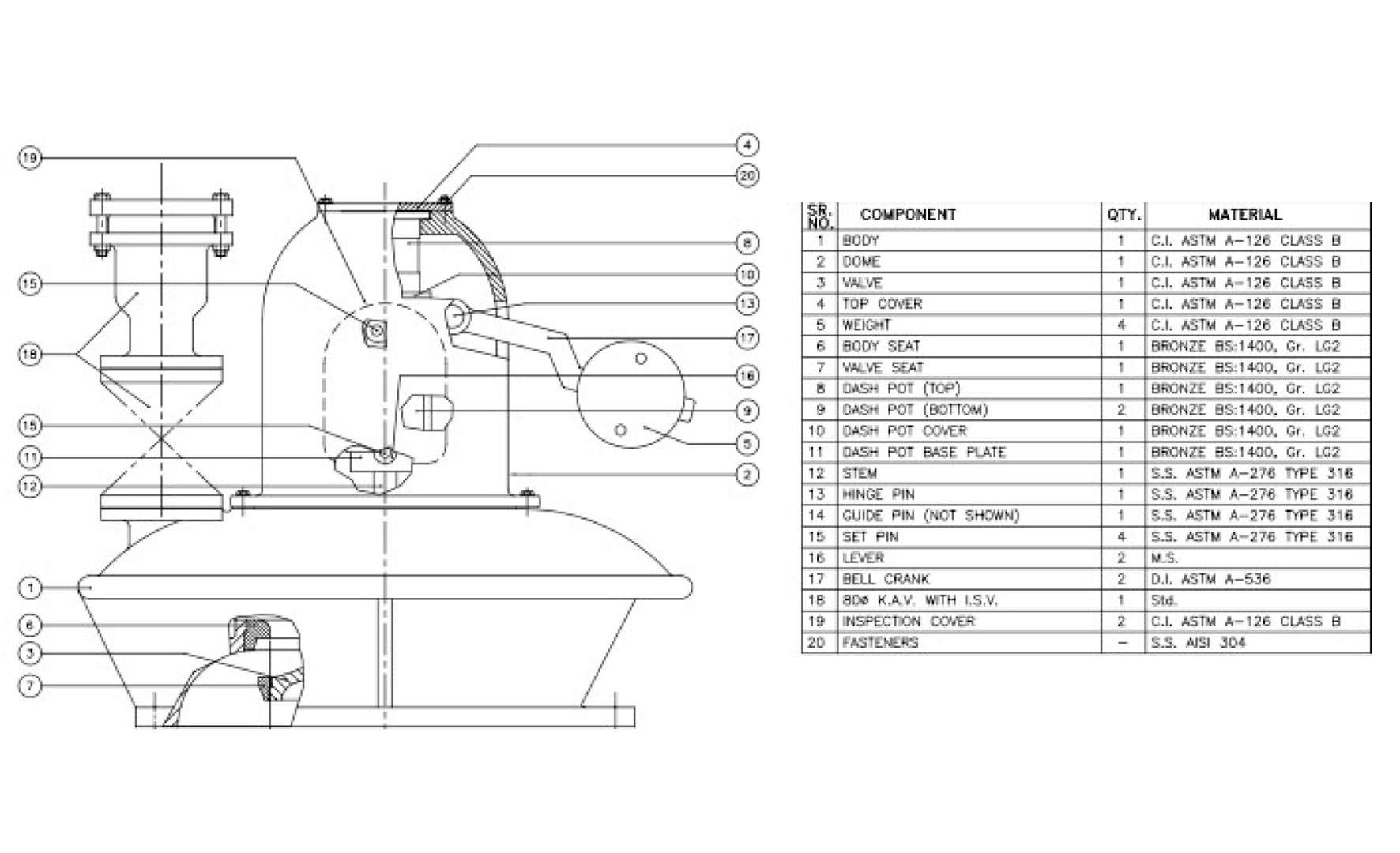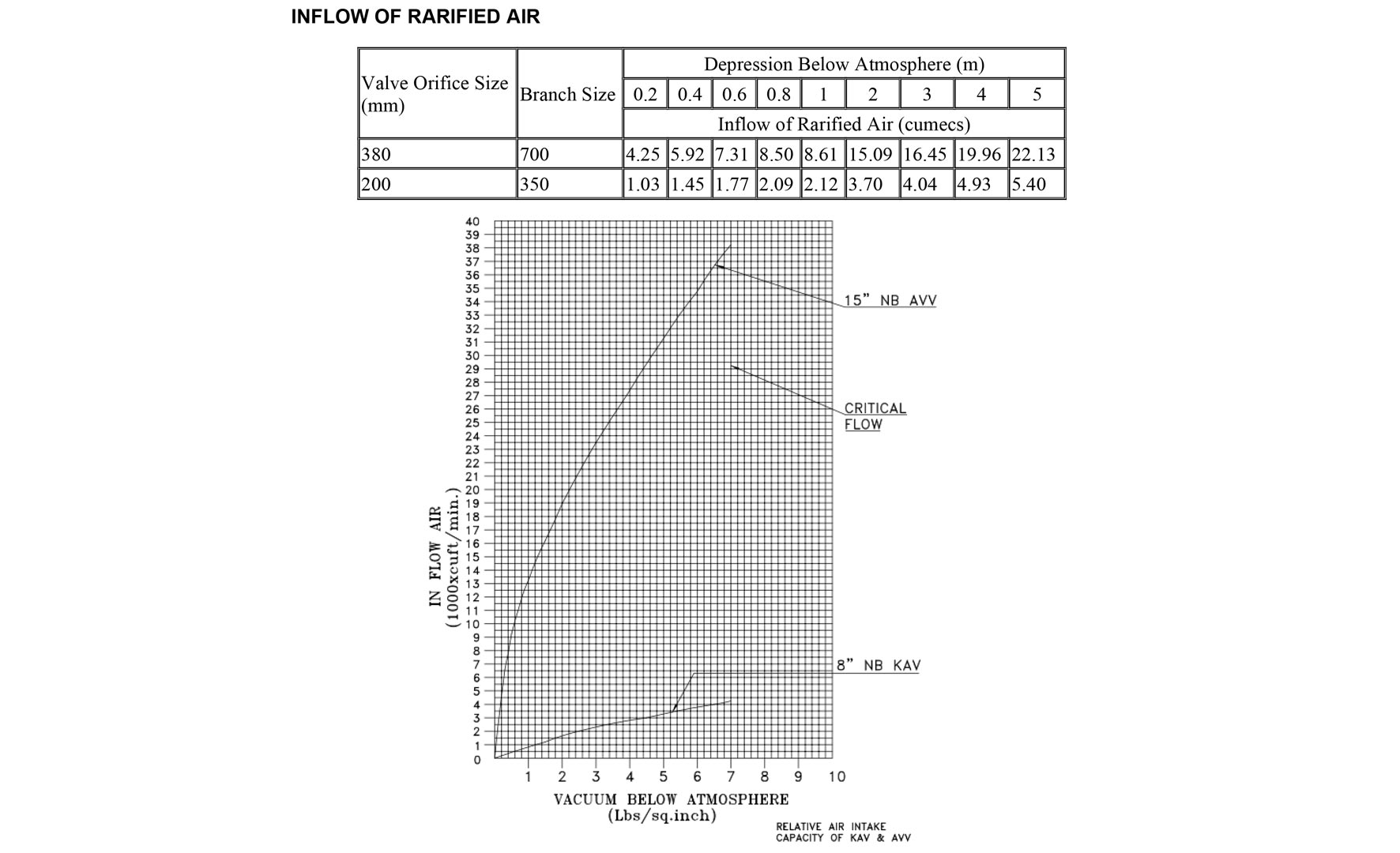ANTI VACUUM VALVE

200 mm / 380 mm / 400 mm for mains upto 3600 mm dia.
The Anti-Vacuum Valve is a very special type of air valve. It's primary function is to prevent the formation of vacuum in hydroelectric penstocks or large diameter water mains, which might cause line collapse under such conditions of flow as may result, for example, from too rapid a closure of an upstream head gate or shut down valve, a downstream burst, turbine "runaway" or ordinary emptying of a pipeline.
By virtue of its unique design, the anti-vacuum valve reacts automatically, sensitively and positively, even after long period of inactivity, to changes of pressure within a pipe, and whenever necessary, permits air to flow in at a sufficiently high velocity, and at a low enough induction pressure, to safeguard the line against collapse.
Cowled Inlet Type
An annular cowl shrouds the orifce, affording protection to the orifice and the seating, air flows through the ports provided around the periphery of the body assembly. Application of this type should be confined to situations where no damage is likely to occur to surrounding structures from sudden intake of air.
Duties
The valve automatically allows induction of large volume of air to prevent vacuum formation and also provides an automatic means of ventilating a line when it is being emptied of water and of exhausting air when it is being recharged.
Operation
The valve element is in the form of a disk which is sensitively balanced by a counterpoising mechanism. the disk guide pin is attached to a crosshead, to which is fitted at either end a cranked lever that rocks about an intermediate pivot pin and carries an adjustable counterweight on its outer arm. The parts are so arranged that by adjusting the position of the counter weights, the valve can be balanced at any desired point in its working travel. Thus, when swinging freely the valve may be balanced at partially open position in which case, if it is closed by hand, it is self-opening to the predetermined point of equilibrium and vice versa. Also attached to the crosshead is an oil dashpot which gives free opening, in a downward direction, but offers resistance to closing, in an upward direction and avoids all possibilities of oscillation of the suspended masses.
In action, therefore, the valve cannot remain at either extremity of its travel unless it is acted upon by some external force. During normal operation, the disk is held shut by the water pressure in the pipe. Should the pressure on the underside of the disk fall below that of the atmosphere, the valve will immediately open to admit air and break the vacuum. With a very small vacuum, say 1 in of mercury or about 1/2 psi below atmosphere, the valve opens fully and offers a wide passage for the free flow of air. On the cessation of air inflow, the valve returns to a position of slightly open, which is sufficient for the escape of air during refilling of the line. When the rising water makes contact with the underside of disk, closure is completed; only a very small water pressure is required to close the valve, consequently, the quantity of water over-flowing through the orifice during final closure is negligible.

ANTI VACUUM VALVE

